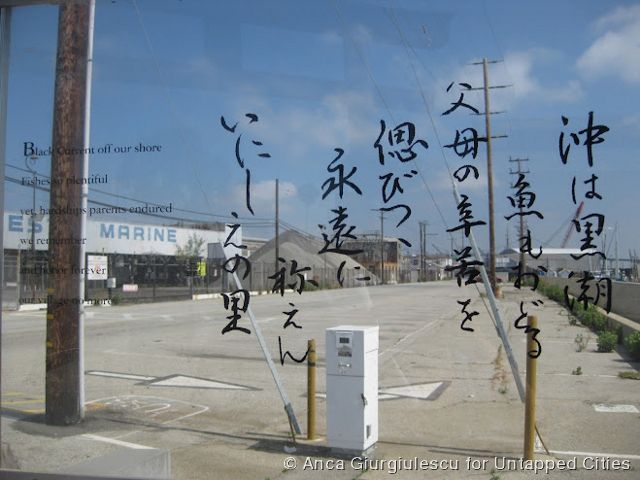How to See the Liberty Bell...in Queens
A copy of the famous American bell can be found inside a bank, which itself is modeled after Independence Hall!


Terminal Island’s Southwest Marine complex still holds reminders of the island’s shipbuilding and Japanese immigrant histories.
One of the last visible reminders of Chinese American history in the Los Angeles area may soon be lost. The Chinatown House in Rancho Cucamonga was just named to the National Trust for Historic Preservation’s 2013 list of America’s 11 Most Endangered Historic Places. This two-story shack may be missing the ceramic, curving roofs and decorative colors that we usually associate with Chinatown, but its brick structure conceals its previous use as a general store and home to about fifty of the Chinese-American workers who helped build the LA suburb.
In the nineteenth and twentieth centuries, Chinese laborers dug waterways, some of which are still in use today, that brought much-needed water to the city. Built in 1919, the Chinatown House has fallen into disrepair in recent decades under the ownership of the Cucamonga Valley Water District. Last December, the district was ordered to demolish it for safety reasons even though the site was identified as a landmark by the city council in 1979.
LA’s rich immigrant history — especially that of its Asian immigrants — has often been in danger of being forgotten. Just an hour’s drive away from Rancho Cucamonga is Terminal Island, which made the 2012 list of most endangered historic places. The island is the former home of a thriving fishing industry and an established Japanese-American immigrant community that was disbanded when Franklin Roosevelt ordered the internment of Japanese residents during World War II. But a year after the island was identified as an endangered historic site, its future is still uncertain. The Los Angeles Conservancy listed the island as an “urgent” issue. Plans for the site are currently under review by the LA Port’s Board of Harbor Commissioners, and a decision on a proposal to renovate the port will be made in July this year.
As Terminal Island shows, the placement of the Chinatown House on the National Trust’s list doesn’t guarantee its survival. Yet it’s surely a welcome boost. Since the city ordered the house’s demolition last year, the Save Chinatown House Coalition has banded to protest. The coalition recognizes the need to preserve physical traces of Cucamonga Valley’s immigrant history, especially reminders of Chinese contributions to the construction of the West. Their efforts resulted in the delay of demolition this April. While the effects of the house’s new “endangered” listing are yet unclear, perhaps the delay will increase the community’s recognition of its immigrant past.
See more of the 2013 list of America’s 11 Most Endangered Historic Places. Get in touch with the author @catku.
Subscribe to our newsletter